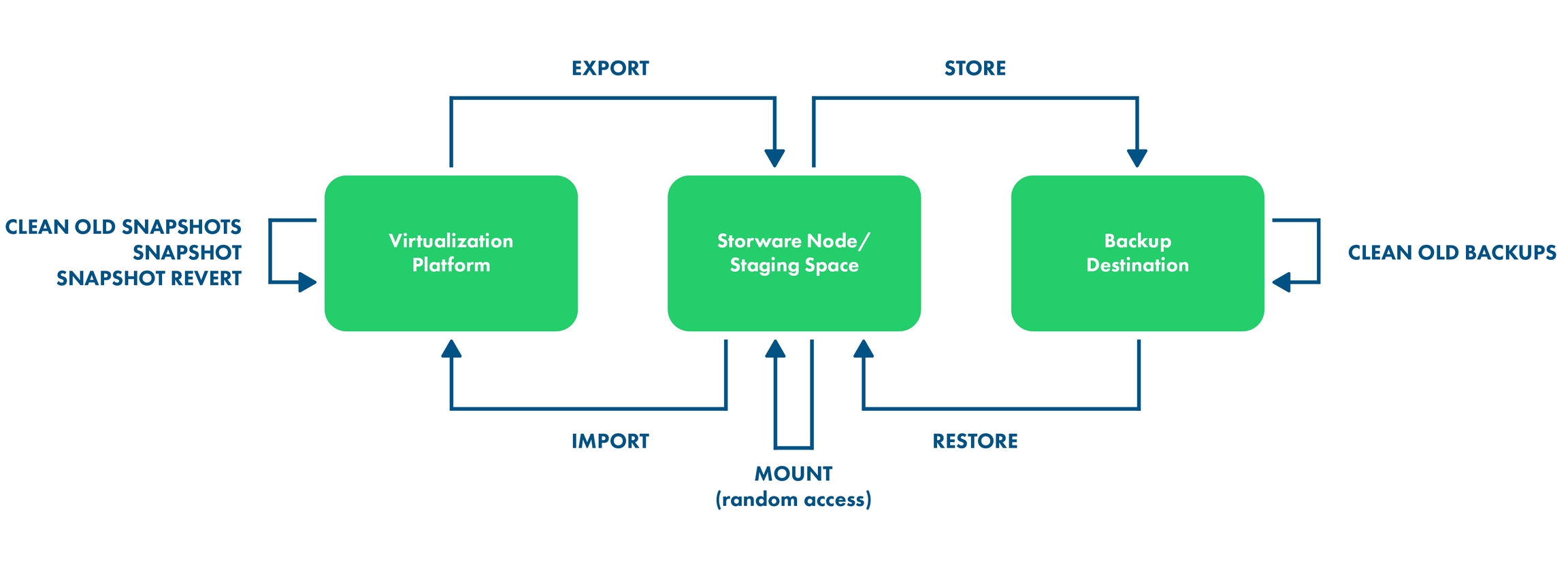Architecture

Components deployment
Storware Backup and Recovery components (server, node, and endpoints server) can be installed on the same host.
The server can be installed on a physical machine or as a virtual machine - externally deployed nodes require network connectivity to the server and backup destinations.
Nodes may be deployed as physical or virtual systems unless the selected backup strategy requires the node to be installed as a virtual machine on a Hypervisor Cluster (especially with the "disk attachment" export mode).
Typical workflows
There are several typical workflows in Storware Backup & Recovery and they result in a set of tasks.

Backup
Export - a task that creates a backup or snapshot and exports data to the staging space
Store - a task that moves data to the backup destination
Restore to filesystem
Restore - a task that gets data from a backup provider and puts data in the staging space
Restore to a virtualization platform
Restore - a task that gets data from a backup provider and puts data in the staging space (if it is a full backup that is being restored residing on the file system backup provider - this task just informs where files are waiting for import task)
Import - a task that imports data to the virtualization platform and recreates VM
Mount (file-level restore)
Restore - a task that gets data from a backup provider and puts data in the staging space (if it is a full backup that is being restored residing on the file system backup provider - this task just informs where files are waiting for the mounting task)
Mount - mounts backup on the Storware Backup & Recovery Node and either allows user to browse files or exposes backup over iSCSI, so that remote iSCSI initiator can access it)
Snapshot
A task creates a local persisted snapshot of a virtual machine in the hypervisor environment according to a policy that was assigned to the machine. Snapshot retention is managed by the policy settings.
Last updated